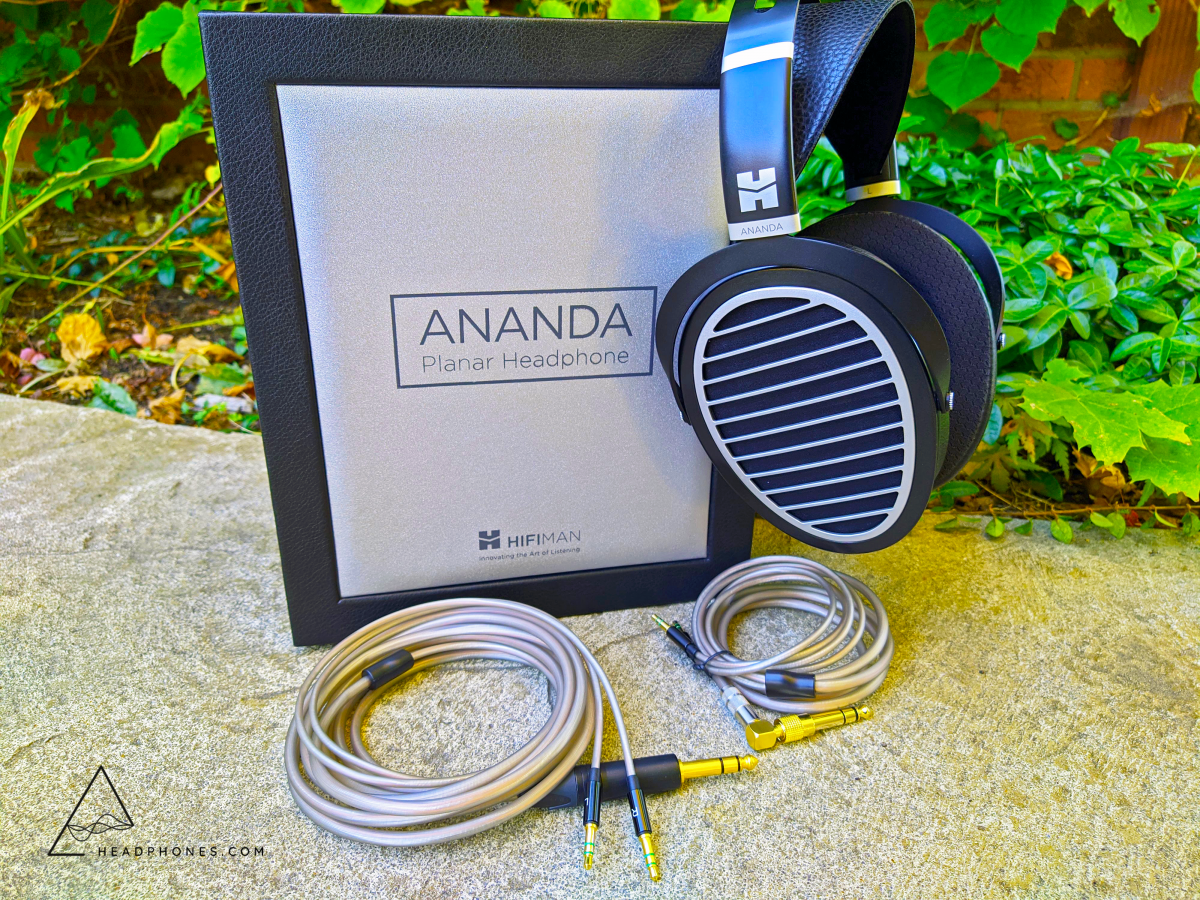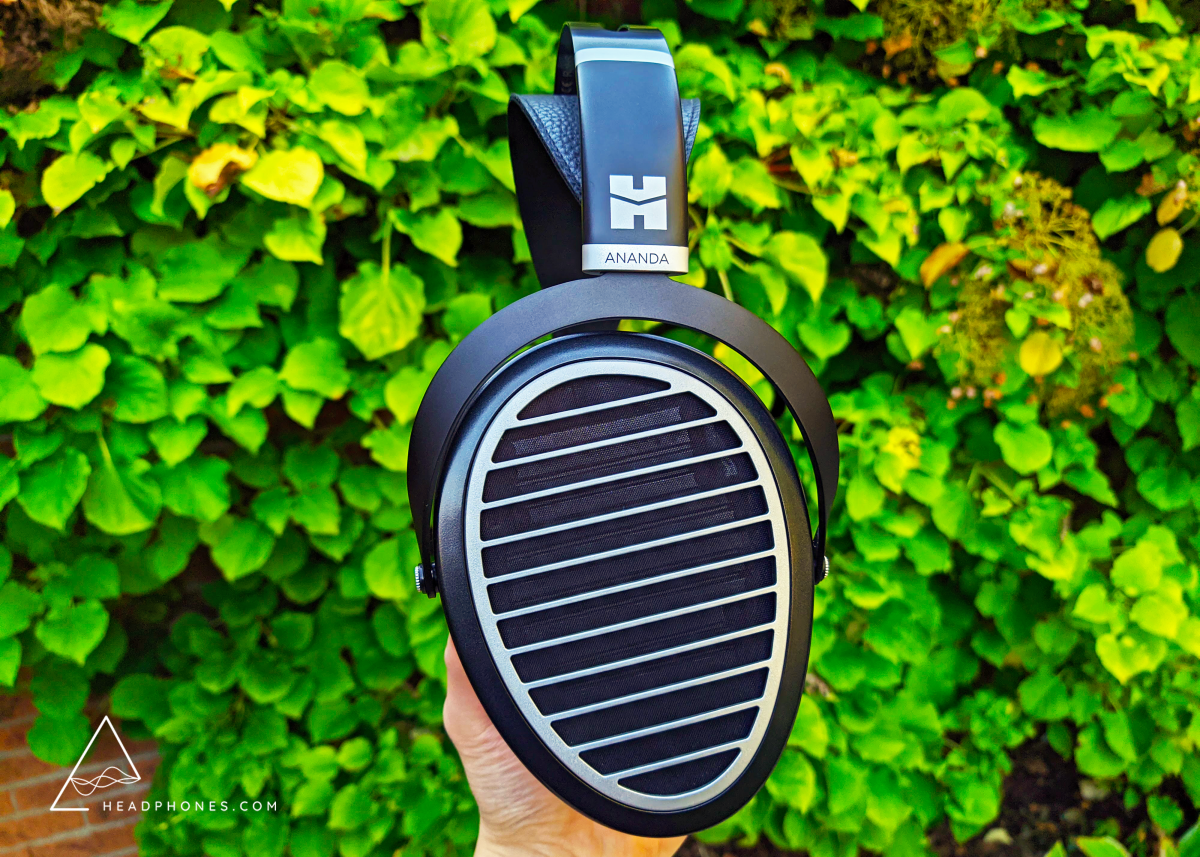HiFiMan Ananda Review: Double the Sundara?

Review written by @Fc-Construct
Review unit on loan from headphones.com
Introduction
Previously, I took a look at the HiFiMan HE400se and Sundara as a journey into planars. To conclude the trilogy, I’ll be reviewing the Ananda today. At $700, it represents the last “normal” HiFiMan headphone before we enter the big leagues of the kilobuck range. Of course, HiFiMan does have a few other interesting models such as the HE6 (and its variants) or HE560 but for most people looking for their first set of planars, the HE400se/Sundara/Ananda progression is likely the most relevant one.
Interestingly, the Ananda sport an oval cup design similar to that of their higher end models such as the Arya, HE1000, and Susvara. This is in contrast to the circular cups of the HE400se, Sundara, or the infamous HE6. It seems like the shape of the cups may be more than just an aesthetic design but rather a design philosophy for whatever signature HiFiMan deems appropriate for a particular model. Abstract musings about headphone design aside, how does the Ananda sound? For this review, I’ll largely be comparing to the Sundara so do check out that review first!
What’s in the Box?
The unboxing of the Ananda is yet another step up from the HE400se or Sundara. This time, past the other cover you get a sleek flip-top box bound in a handsome black faux leather. Looks like HiFiMan is keen on making sure their premium models get premium treatment. I can only imagine what the Susvara comes with. Maybe a bottle of champagne?
Build wise, the Ananda has the same headband style as the Sundara with the large, suspended headband and metal yokes. The oval cups are sadly made of plastic. A little disappointing when coming from the Sundara. The two included cables are… strange to say the least. They’re a flexible beige hollow tube-type thing that sheathes the single-core left and right wires that terminate in gold-plated metal 3.5 mm jacks. One is a long, 3 m version while the other is a shorter 1.2 m cable.
In terms of comfort and usability, I find the Ananda very comfortable for long listening sessions. It’s light with no headband pressure. The cups are massive though. If you have a very small head, you might want to see if it fits. Additionally, the Ananda leaks sound. A lot. Of course, as an open headphone you’d expect some level of leakage but with the Ananda, its almost as loud on the outside of the cups as it is on the inside. Everyone in the room will hear what you’re hearing.
Sound
At first listen, the Ananda was remarkably similar to the Sundara except with peakier lower treble and a more articulate bass response. But as I listened to it over the following weeks, I started to notice a couple things that the Ananda brings to the table such greater resolution, a better staging experience, and less aggressive sound. Interestingly, the Ananda isn’t as power hungry as the HE400se or Sundara. Measurement of the HiFiMan Ananda on an industry standard GRAS 43AG measurement rig. The dotted black line represents the Harman target, a reference frequency response developed using consumer preferences. The blue line is how the headphone in question measures. Effectively, this shows how significantly the headphone’s frequency response deviates from the target. Note however that the target is highly smoothed and strict adherence to the Harman target is not necessary for a headphone to sound good.
Measurement of the HiFiMan Ananda on an industry standard GRAS 43AG measurement rig. The dotted black line represents the Harman target, a reference frequency response developed using consumer preferences. The blue line is how the headphone in question measures. Effectively, this shows how significantly the headphone’s frequency response deviates from the target. Note however that the target is highly smoothed and strict adherence to the Harman target is not necessary for a headphone to sound good.
Bass
There’s a bit of a theme with these HiFiMan planar headphones in that they all graph similarly in the bass. They each have a relatively flat response with a clean, controlled sound but exhibit their own subtle differences. The HE400se had a bluntedness to its notes. The Sundara brought a layer of weight and aggressiveness. The Ananda is comparatively relaxed and articulate. The bass doesn’t have the same level of depth to its sound as the Sundara and the attack of notes are slightly soft. But when it comes to resolution, the Ananda cleanly beats the Sundara out. There’s a seamless coherency in the bass that effortlessly separates instruments and brings forth the nuances between bass notes. The bass guitar especially has a nimbleness to it. Impressive stuff, but the trade-off of reduced note weight is something to definitely keep in mind.
Mids
The upper mids tuning focuses on sheer clarity and transparency in the vocals. However, this comes at the cost of some vocal body that may cause leading vocals to sound thin and a little disembodied that is further exacerbated by the Ananda’s excellent ability to clearly isolate and separate vocals in the soundstage. That said, this is a relatively minor tonal issue that goes away with a bit of brain burn in. Vocal harmonies and stringed instruments like violins are beautifully rendered and blend excellently into tracks without losing their distinct voicings. Compared to the Sundara, the Ananda has a mellower tone in the mids, which I appreciate here as it fits balances out the more delicate timbre of the mids.
Treble
The Ananda stumbles in the treble. The good news is that it gets rid of the brittleness in the Sundara and tames the spiciness of the treble that peppered the treble notes of the Sundara. The bad news is that it seems to have a couple large treble peaks. While the Ananda is generally less sharp sounding vs. the Sundara, there is a bright burst of energy when notes do run into these peaks. You hear this the most with hats and cymbals as they pop right out and are highlighted by the Ananda. Similarly, vocal sibilance is more prominent on the Ananda. Think of it like this: in the Sundara, there are lots of tiny micro peaks that dot the treble response. In the Ananda, these micro peaks are smoothed out and replaced with a large peak or two. Peaks aside, the treble of the Ananda is the best of the trio with a clarity and vividness not seen with the HE400se or Sundara.
Presentation
The presentation of the Ananda is where it distinguishes itself. The Ananda has very open sounding stage to it. In fact, if you were to put your hands over the cups, it would dramatically change its sound. But this doesn’t necessarily mean the soundstage is unrealistically massive, however. It moreso affects my perception of the sound so it has less of that “in-your-head” effect.
The soundstage thus has a naturally wide and open sound. On top of this, vocals are less stage forward as one might expect given the abundance of upper mids energy the Ananda has, introducing a pleasant sense of stage depth. Imaging is excellent horizontally though stage height isn’t particularly tall. While the absolute difference in resolution, instrument separation, and layering between the Ananda and Sundara here isn’t necessarily night and day, I find the Ananda to be better on a technical level and just sounds effortless in the way it handles music. For the price, it’s one of the most resolving headphones you can get, even edging out the Focal Elex if I’m remembering correctly. For these reasons, I really do like the Ananda’s overall staging and presentation. The only minor complaint I have is that the Ananda doesn’t really improve on the Sundara’s dynamic ability. 
Should You Buy It?
Yes, if you’re looking for the next step up in soundstage and resolution. Between the HE400se, Sundara, and Ananda, it’s obvious that the Sundara is the sweet spot in terms of price and performance. At $700, the Ananda doesn’t really offer a big enough jump in sound quality to say worth twice the price of the already excellent Sundara. But that’s just how diminishing returns go. Whether you’ll willing to spend extra for the differences highlighted in this review is something only you can decide. Personally, I really enjoy headphones with strong resolution and staging characteristics and the Ananda effortlessly delivers on that front. However, it does have its downsides. Namely thinner mids, harder treble peaks, and a softer attack compared to the Sundara. As such, I think you if you can get the Ananda on sale for about $500 or so, it’s a superb option and one I would pick over the Sundara.
If I had my way, I’d merge the Sundara and Ananda. Take the bass, mids and lower treble of the Sundara and combine it with the mid/upper treble of the Ananda. For technical performance, combine the attack and aggression of the Sundara with the staging and resolution of the Ananda. That would be awesome. And honestly, seeing as how each step up from the HE400se to the Ananda so far has had minor but very real improvements, maybe the ideal HiFiMan headphone lies further beyond in the Arya or Susvara. But until then, I’ll enjoy some music with Ananda despite its minor flaws.
